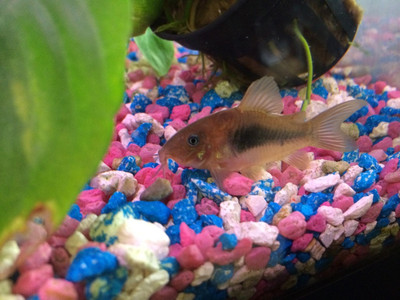Bronze Corydoras
Posted by Max Gandara on on 24th Aug 2025
The Bronze Corydoras (*Corydoras aeneus*) is one of the most popular and widely kept freshwater catfish in the aquarium hobby. Known for its hardy nature, peaceful temperament, and helpful bottom-feeding behavior, this species is a favorite among beginners and experienced aquarists alike.
Native to South America, the Bronze Corydoras can be found in rivers, streams, and floodplains, often in large schools. In the aquarium, they grow to about 2.5–3 inches in length and display a metallic bronze to greenish sheen along their bodies, which gives them their name. Their whisker-like barbels help them detect food along the substrate, making them excellent scavengers.
Bronze Corydoras are social fish and thrive when kept in groups of six or more. A proper school allows them to feel secure and show their natural, playful behaviors. They are peaceful and do well in community tanks with other gentle species such as tetras, rasboras, and livebearers.
They prefer well-maintained aquariums with soft substrate like sand or smooth gravel to protect their sensitive barbels. Tanks should be at least 20 gallons and include hiding spots with driftwood, caves, or plants. These corys enjoy slightly acidic to neutral water (pH 6.0–7.5) with temperatures between 72–79°F.
Feeding them is simple, as they are omnivorous and accept a wide variety of foods. High-quality sinking pellets, algae wafers, and frozen or live foods like bloodworms, brine shrimp, and daphnia make excellent dietary staples. While they do clean up leftover food, they should always be given their own meals to ensure proper nutrition.
Bronze Corydoras are also known for their interesting breeding habits. They form a “T-position” during spawning, where the female carries the fertilized eggs to carefully chosen spots on glass, plants, or decorations. With the right conditions, they can be bred in home aquariums.
Hardy, active, and endearing, the Bronze Corydoras can live up to 10 years with good care. Their schooling behavior, gentle nature, and usefulness as bottom-dwellers make them a perfect addition to peaceful community aquariums.

